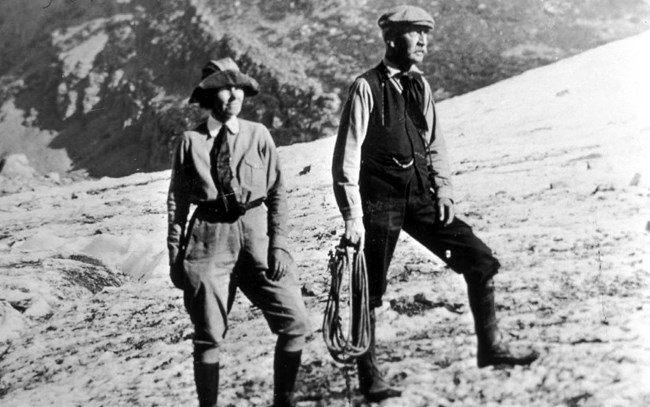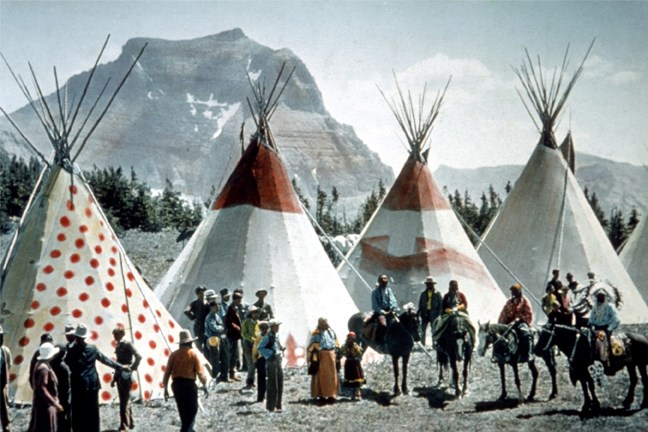
NPS Glacier National Park-A Look Into the PastRecent archaeological surveys have found evidence of human use dating back over 10,000 years. These people may have been the ancestors of the tribes that live in the area today. By the time the first European explorers came to this region, several different tribes inhabited the area. The Blackfeet Indians controlled the vast prairies east of the mountains. 
NPS Indigenous PeopleThe Salish, Pend d’Oreille and Kootenai Indians lived and hunted in the western valleys. They also traveled east of the mountains to hunt buffalo. In the early 1800’s, French, English, and Spanish tappers came in search of beaver. In 1806, the Lewis and Clark Expedition came within 50 miles of the area that is now Glacier National Park.As the number of people moving west steadily increased, the Blackfeet, Salish, Pend d’Oreille and Kootenai were forced onto reservations. The Blackfeet Reservation adjoins the east side of the park. The Flathead Indian Reservation is southwest of Glacier. This entire area holds great spiritual importance to the Blackfeet, Salish, Pend d’Oreille and Kootenai people. The railroad over Marias Pass was completed in 1891. The completion of the Great Northern Railway allowed more people to enter the area. Homesteaders settled in the valleys west of Marias Pass and soon small towns developed. Under pressure from miners, the mountains east of the Continental Divide were acquired in 1895 from the Blackfeet. Miners came searching for copper and gold. They hoped to strike it rich, but no large copper or gold deposits were ever located. Although the mining boom lasted only a few years, abandoned mine shafts are still found in several places in the park. Around the turn of the century, people started to look at the land differently. Rather than just seeing the minerals they could mine or land to settle on, they started to recognize the value of its spectacular scenic beauty. Facilities for tourists started to spring up. In the late 1890’s visitors arriving at Belton (now called West Glacier) could get off the train, take a stagecoach ride a few miles to Lake McDonald, and then board a boat for an eight mile trip to the Snyder Hotel. No roads existed in the mountains, but the lakes allowed boat travel into the wilderness. |
Last updated: June 7, 2018
